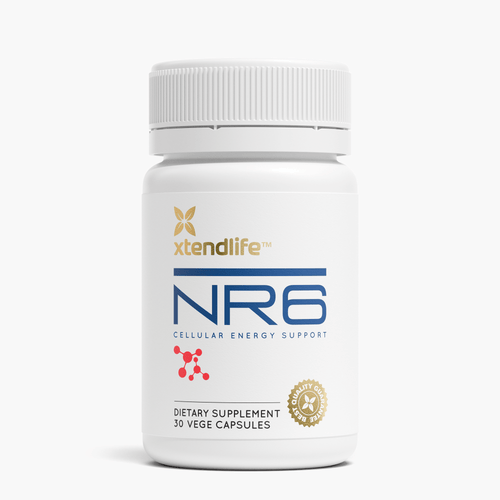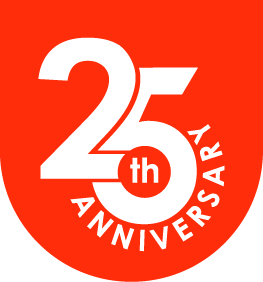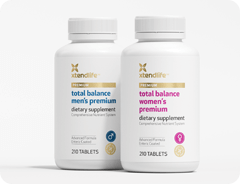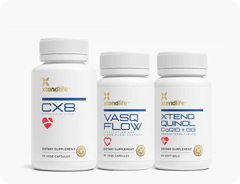What is NAD+?
NAD+ is the acronym for nicotinamide adenine dinucleotide. It is a molecule found in every cell in your body where it performs critically important functions. NAD+'s functions fall into two main categories. It shuttles electrons like a little train between other molecules and in doing so, helps create energy. It is also necessary for several types of proteins to do their jobs. Those jobs are incredibly important for cellular health and maintenance.
Taken together, the dual roles of NAD+ in energy creation and cellular health and maintenance are absolutely critical to cellular function and therefore overall health.
How Important is NAD+?
Let us start with some numbers to illustrate how important NAD+ really is. Our bodies are made up of approximately 37 trillion cells. Cells must complete a lot of 'work' or cellular reactions - to maintain themselves. Every single one of your 37 trillion cells relies on NAD+ to carry out its ongoing work.
NAD+ is a central part of a cell's machinery and this is evidenced when you look at the number of reactions it is involved in. Together, NAD+ and a closely related molecule NADP are involved in around 500 cellular reactions.
NAD+, Cellular Energy and Redox
NAD+ acts like a little train. It transports high-energy packages of electrons from one location in the cell and delivers them to a different location in the cell. When not carrying a package of electrons, it is referred to as NAD+. When it is loaded up with a package of electrons, it is called NADH. Hence NAD+ and NADH are actually the same molecules, the only difference being whether or not it is carrying a package of electrons.
The "+" in NAD+ indicates a net positive charge. When it gains a package of electrons, the negatively charged electrons cancel out the positive charge and hence it loses its "+". At the same time, it gains an "H". The "H" is like the suitcase that carries the package of electrons inside the train (technically referred to as hydride). When NADH delivers its package of electrons, it becomes NAD+ once more.
You might have heard the term redox before. When NAD+/NADH works as a little train delivering packages of electrons, it is called an oxidation-reduction reaction, or redox reaction for short.
As an essential electron transporter, NAD+ facilitates metabolic processes including:
- Glycolysis: This is a 10-step metabolic pathway that converts glucose to pyruvate and in doing so generates ATP (cellular energy).
- The Krebs Cycle (also known as the Citric Acid Cycle): This is the main driver of cellular respiration or energy creation. It takes the oxidized form of pyruvate (from glycolysis described above) and through a series of redox reactions, and another process called the electron transport chain, generates most of the ATP (cellular energy) required for life.
- Fatty Acid Oxidation: This process involves breaking down fatty acids into useable blocks.
All of these processes involve cycling of packages of electrons by NAD+, turning it into NADH, and back again. The net result of these biochemical pathways is that usable energy is made in each and every cell of your body!
NAD+ Is Used by Enzymes
As well as its essential role in energy creation, NAD+ is also used by enzymes for various functions.
Poly-ADP-ribose polymerases, or PARPs for short are one such group of enzymes. They attach parts of the NAD+ molecule to other molecules. There are 17 different PARPs in human cells and one of their main functions is to repair broken DNA and maintain the structure of DNA. One example of how PARPs use NAD+ is that they can attach NAD+ fragments to DNA in sites where it is damaged and help facilitate other molecules to get involved in fixing the problem.
Sirtuins are another group of enzymes that use NAD+. In this case, sirtuins use broken-down NAD+ to "deacetylase" other molecules in the cells. For example, sirtuins in the nucleus can deacetylate histones on DNA to regulate the replication of DNA. Another function is to deacetylate certain enzymes to help cells respond to oxidative stress.
Sirtuins and the genes that encode them have been the subject of intense research for their role in increasing lifespan in yeast, worms, flies, and mice. It is postulated, although not proven, that sirtuins may have a role in lifespan in humans.
Sirtuins are responsible for some of the beneficial effects of exercise and calorie restriction (fasting). Sirtuins are also thought to act as a master regulator of mitochondria (cell's energy batteries), increasing the number of mitochondria to match energy needs. Modulation of sirtuin activity in mammals can regulate many processes such as gene expression, cell metabolism, apoptosis, DNA repair, cell cycle, development, immune response and neuroprotection.
Other enzymes that consume NAD+ actually use up large quantities of NAD+ and may be involved in driving NAD+ depletion with detrimental effects. The enzyme named SARM1 is an example of this, it uses up large quantities of NAD+ and in doing so, depletes NAD+ levels and induces degeneration in neurons.
Declining Levels of NAD+
Given the importance of NAD+ for cellular energy, cell health, and maintenance, intuition tells us this important molecule should be preserved throughout life. However, that is not the case. We know that cellular levels of NAD+ are in a constant state of flux - as our cells create and use energy, so too our cells create and use NAD+.
NAD+ levels can fluctuate or decline because of changes in the absolute amount of NAD+/NADH or shifts in the NAD+/NADH ratio. Our cells are constantly creating and using NAD+ and the amount present at any time will depend on your age, nutrient availability, energy requirements (including an oversupply of energy from food or undersupply of energy from fasting), and whether your body is under physiological stress.
Research has revealed that everyday physiological stressors including excess alcohol consumption, excess UV exposure, sleep deprivation, overeating, infection, and a sedentary lifestyle are associated with declining levels of NAD+.
A growing number of studies show that decreased NAD+ levels are also associated with a whole host of disease states and in addition, across all organisms studied to date, from single-celled yeast to mice to humans, research has shown NAD+ levels decline with age.
De novo biosynthesis, the Preiss-Handler pathway, and the Salvage pathway. Nicotinamide Riboside enters NAD+ biosynthesis via the so-called "salvage pathway". It's called the salvage pathway because it was originally identified as recycling another NAD+ related molecule (NAM). NAD+ is used up through numerous cellular processes.
How to Get More NAD+
Healthy lifestyle choices are associated with higher levels of NAD+. To give your cells the best chance of having sufficient NAD+, research has shown some lifestyle habits support higher NAD+ levels, namely:
- Eating a whole food, balanced diet with plenty of B3's. Poultry, beef, and fish are all excellent sources of Vitamin B3.
- Exercise is associated with increased NAD+
- Fasting (calorie restriction) is associated with increased NAD+
- Being in a healthy sleep-awake cycle and getting enough sleep
- Supplementation with NAD+ precursors such as nicotinamide riboside chloride has been clinically proven to boost NAD+ levels.
Researchers around the globe are investigating how to boost NAD+ as therapy for degenerative conditions related to aging.
Based on the sum total of all the combined clinical and preclinical research to date, all indicators point to increased NAD+ levels as being beneficial for health.
Human clinical studies reveal that taking nicotinamide riboside chloride as a supplement is an effective mechanism for increasing NAD+ levels. Taking nicotinamide riboside chloride in supplement form is like a comprehensive insurance policy for your cells - making sure your cells have the building blocks needed to function optimally.
A Note About the Term Niacin
Niacin is the generic name for several compounds that are classified as vitamin B3 - a water-soluble B vitamin. The term niacin includes nicotinic acid and nicotinamide. These are the two most common forms of vitamin B3 supplements. Nicotinamide riboside chloride is a derivative of vitamin B3.
NR6 - Natural NAD+ Booster
A synergistic combination of natural ingredients to support cellular energy and optimal NAD+ level.
Shop now
References
- Ansari, H.R. and Raghava, G.P., Identification of NAD Interacting Residues in Proteins. BMC Bioinformatics, 2010. 11(1): p. 160.
- Balard, B., Giacomoni, P.U., Nicotinamide Adenosine Dinucleotide Level in Dimethylsulfate-Treated or UV-Irradiated Mouse Epidermis. Mutat Res, 219(1): p. 71-79.
- Bock, F.J. and Chang, P. New Directions In Poly(ADP-Ribose) Polymerase Biology. FEBS J, 283(22): p. 4017-4031.
- Braidy, N., et al., Age Related Changes in NAD+ Metabolism Oxidative Stress and SIRT1 Activity in Wistar Rats. Plos One, 6(4): p. E19194.
- De Murcia, J.M., et al., Requirement Of Poly(ADP-Ribose) Polymerase In Recovery From DNA Damage In Mice And In Cells. Proc Natl Acad SciUSA, 1997. 94(14): p. 7303-7307.
- Essuman, K., et al., The Sarm1 Toll/Interleukin-1 Receptor Domain Possesses Intrinsic NAD(+) Cleavage Activity That Promotes Pathological Axonal Degeneration. Neuron, 2017. 93(6): p. 1334-1343 e5.
- Gariani, K., et al., Eliciting the Mitochondrial Unfolded Protein Response By Nicotinamide Adenine Dinucleotide Repletion Reverses Fatty Liver Disease in Mice. Hepatology, 63(4): p. 1190-1204.
- Guest, J., et al., Changes in Oxidative Damage, Inflammation and [NAD(H)] With Age in Cerebrospinal Fluid. Plos One, 9(1): p. E85335.
- Levine, D.C., et al., NAD(+) Controls Circadian Reprogramming Through PER2 Nuclear Translocation To Counter Aging. Mol cell,
- Massudi, H., et al., Age-Associated Changes in Oxidative Stress and NAD+ Metabolism in Human Tissue. Plos One, 2012. 7(7): p. E42357.
- Nakahata, Y., et al., Circadian Control of the NAD+ Salvage Pathway By Clock-Sirt1. Science, 324(5927): p. 654-657.
- Ramsey, K.M., et al., Circadian Clock Feedback Cycle Through NAMPT-Mediated NAD+ Biosynthesis. Science, 324(5927): p. 651-654.
- Seyssel, K., et al., Regulation of Energy Metabolism and Mitochondrial Function in Skeletal Muscle During Lipid Overfeeding In Healthy Men. J Clin Endocrinol Metab, 99(7): p. E1254-1262.
- Theorell, H., Bonnichsen, R., The Mechanism of Alcohol Dehydrogenase Action. Acta Chemica Scandinavica, 5: p. 329.
- Trammell, S.A., et al., Nicotinamide Riboside Opposes Type 2 Diabetes and Neuropathy in Mice. Sci Rep, 6: p. 26933.
- Wang, S., et al., Nicotinamide Riboside Attenuates Alcohol Induced Liver Injuries Via Activation of SIRT1/PGC-1alpha/Mitochondrial Biosynthesis Pathway. Redox Biol, 17: p. 89-98.
- Zhang, N. and Sauve, A.A., Regulatory Effects Of NAD(+) Metabolic Pathways On Sirtuin Activity. Prog Mol Biol Transl Sci, 2018. 154: 71-104.


 Supplements
Supplements Bundles
Bundles









